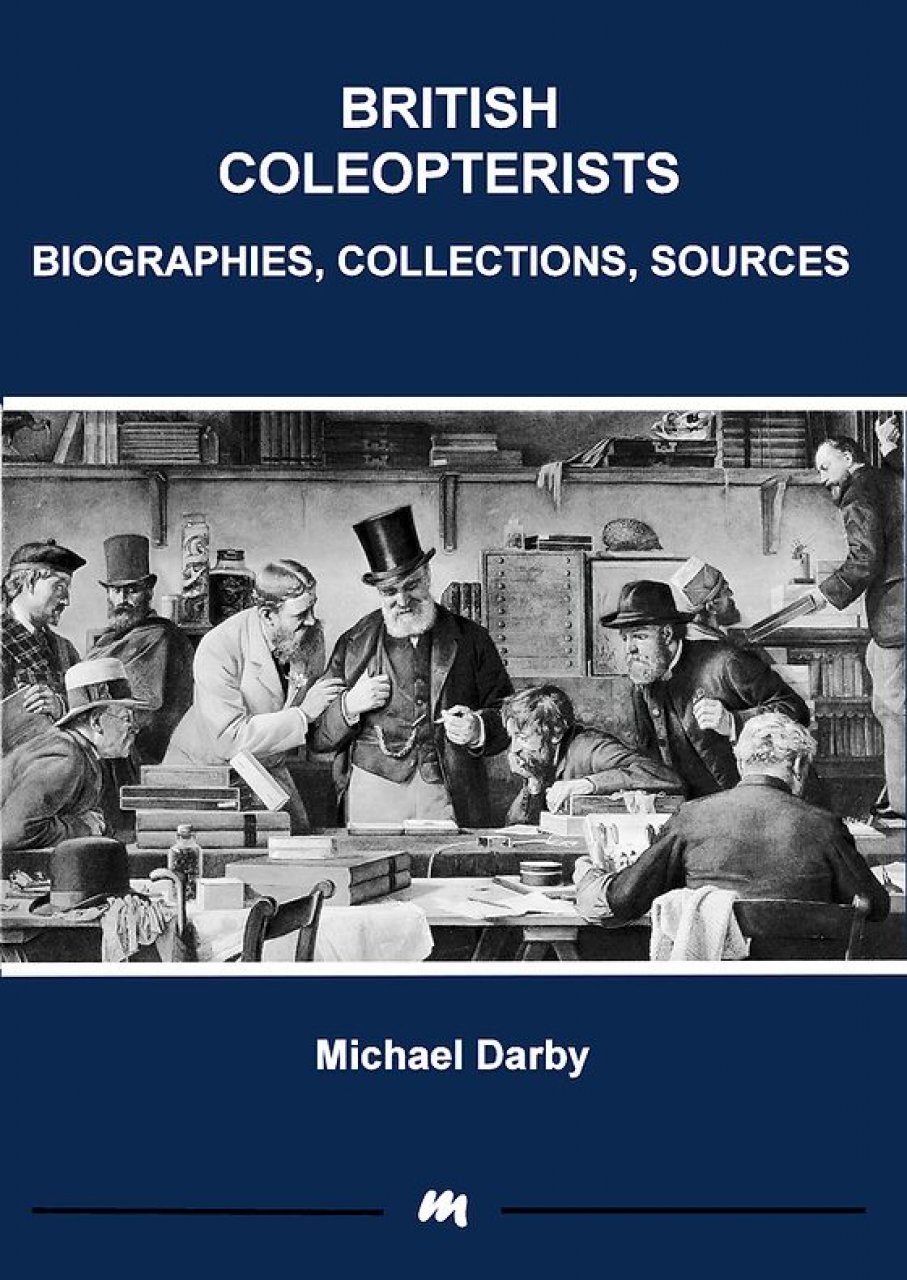Coleoptera Museum collections & curation Taxonomy & systematics
Michael Darby
Malthouse Books
2022
ISBN: 9780955850639
Reviewed by Richard Jones
It seems that anyone who ever picked up a beetle specimen or got a name-check in a book or journal associated with one, has been sieved out and included in Michael Darby’s truly exhaustive compendium of coleopterology. There is, though, some debate about what makes a coleopterist. Darby’s assessment is that to warrant inclusion in the book they had to have been active, rather than merely vaguely interested; criteria include that they donated more than 40 Coleoptera specimens to some national collection, published at least something on beetles, or were credited somewhere in print for a contribution to knowledge.
The book is prefaced with an introduction to British beetle study by Peter Marren who reckons there are maybe 300 coleopterists in Britain today. There may possibly be 500 if you include broader entomologists with half an eye to beetles, but only about 100 contribute to publications — fewer than in Darwin’s day. So it is perhaps surprising that Darby has managed to accumulate 1,700 entries. These range from two lines on a Mr Lyon (no name or initials known) whose collection was mentioned by J.F. Stephens, to Stephens himself who gets two full pages of detailed biography, anecdotes and commentary, although the longest seems to be the four-page entry for Roy Crowson. Darby admits that the lengths of the entries vary very much according to what material was available, often in the form of obituaries, museum accession records, or lists of published books and papers.
Most of the major historical players are given due prominence, including almost all of the founding members of the Royal Entomological Society — names like Hope, Kirby, Newman, Spence, Westwood — and of course Darwin and Wallace. Indeed, it was clearly almost impossible to study entomology at that time without studying beetles, so the book reads like a Who’s Who of key British entomological figures of the last three centuries.
Though many of the entries here were already available online on the Biographical Dictionary web pages of The Coleopterist (coleopterist.org.uk), having them in book form means it is much easier just to dip in. Well, I think so. Without the physical object in my hands, I would never have discovered that Heinrich Jordan (Walter Rothschild’s entomological assistant at Tring) had his life decided for him when, as a boy, he found a specimen of Strangalia armata (now Rutpela maculata) in the woods near Hildesheim, Germany, where he grew up. Nor would I know that Eleanor Ormerod’s first entomological book was Stephens’ A Manual of British Coleoptera, with which she had ‘difficulties’, or that five members of the Waterhouse family, over three generations, could be so deeply involved with beetles.
I recognise the names of quite a few of my old friends and acquaintances, now gone. There’s even an entry for my dad, who had a small beetle collection, now in the Booth Museum Brighton. For the time being I am excluded — by the lucky happenstance that my status as being currently alive and active prevents me from being included. I hope to repeat this absence for many future reprints.


